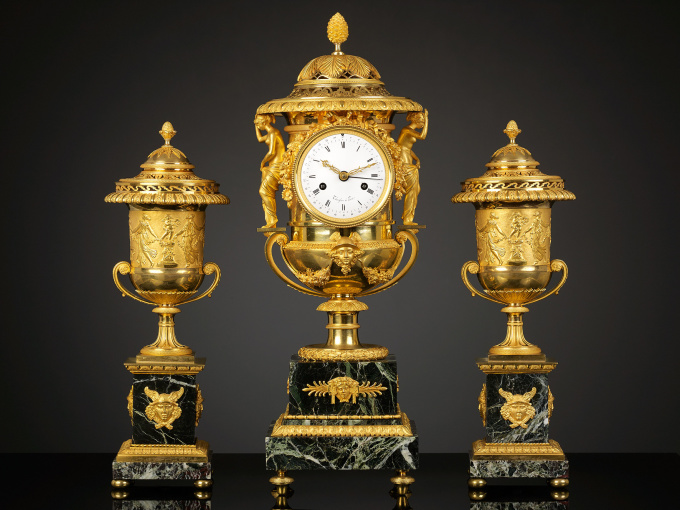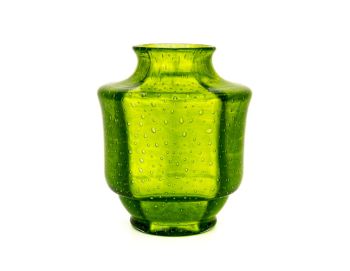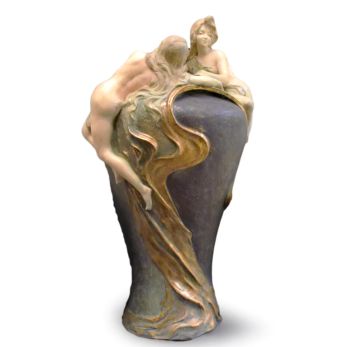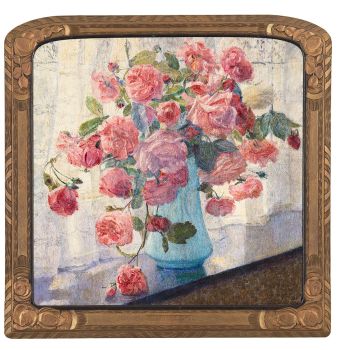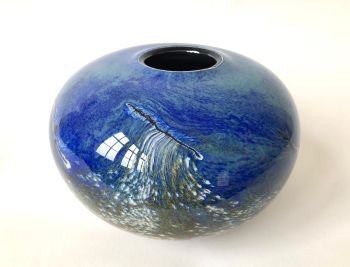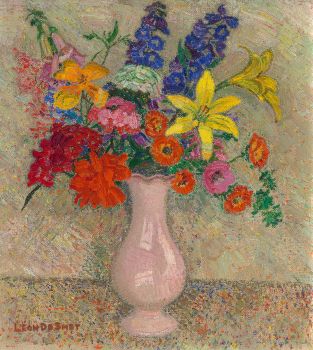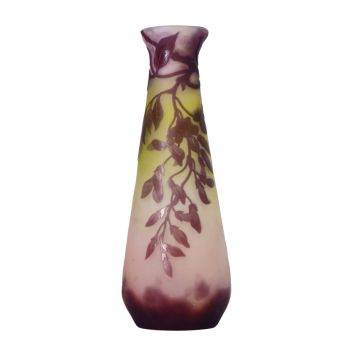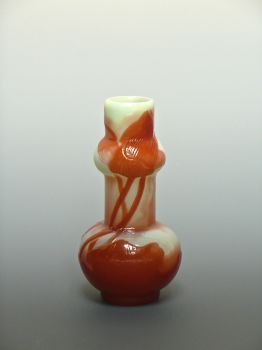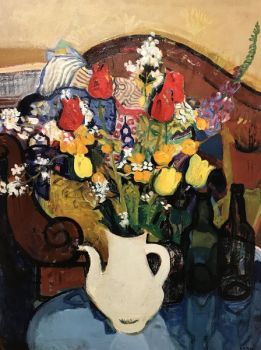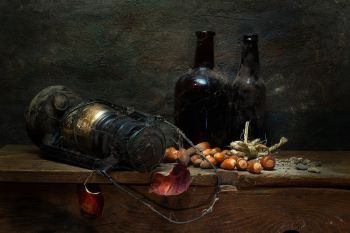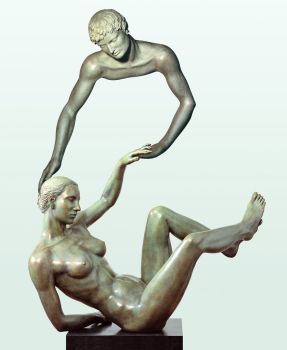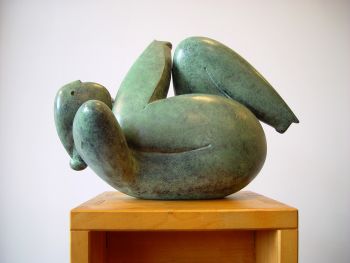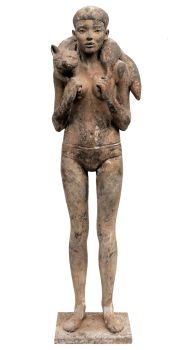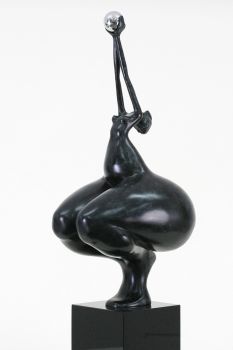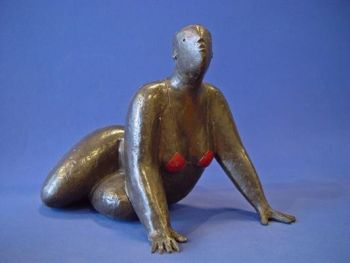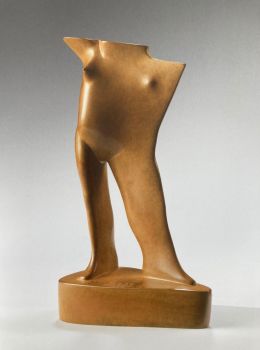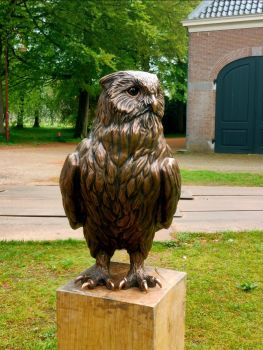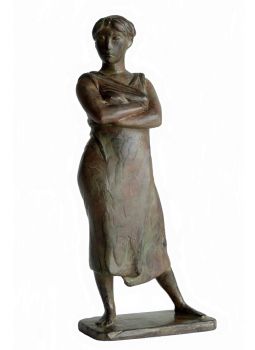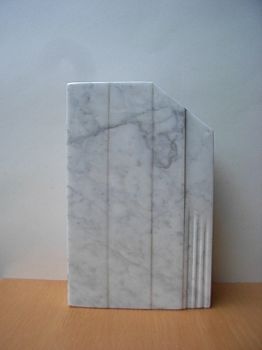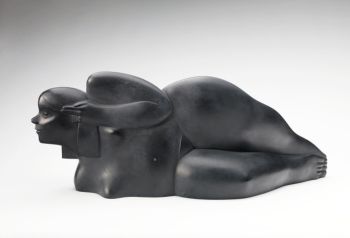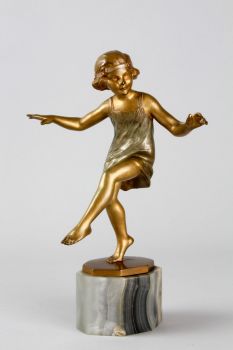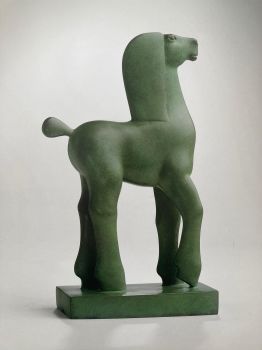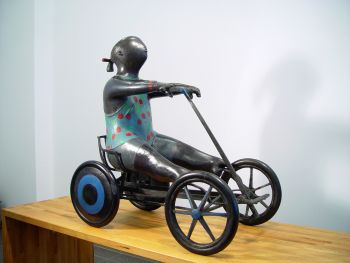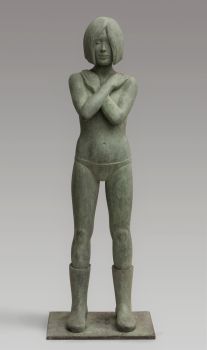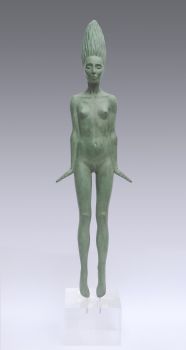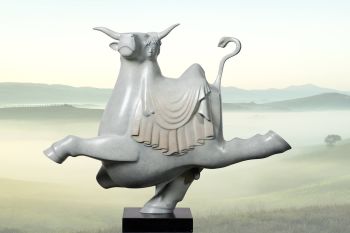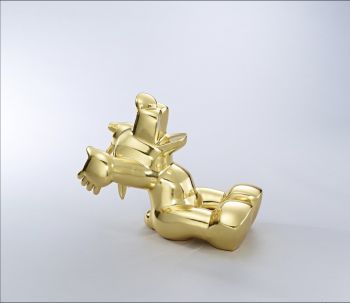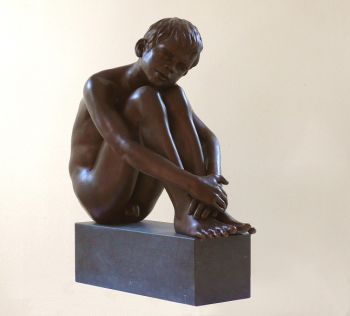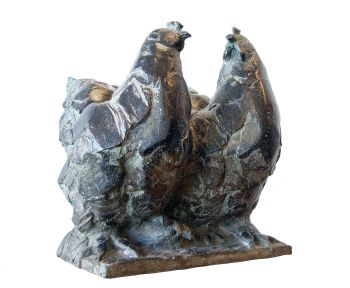An Empire Suite of an Urn-shaped Mantel Clock and Two Vases 1810
Pierre-Philippe Thomire
MarbleStoneBronzeMetal
60 ⨯ 21 ⨯ 21 cm
Currently unavailable via Gallerease
- About the artworkAn exceptionally large and beautiful set of two ornamental vases and a mantel clock, after a model by Thomire, and with a Clockwork by Thonissen.
Clockwork
8-day going train, striking train and central date indication. The white enameled dial shows Roman numerals for the hours and stripes for the minutes. The outer ring indicates the date (1-30) in Arabic numerals.
Signed on the dial: Thonissen à Paris
Thonissen worked from the Rue Mandar from 1806 to 1840.
The mantel clock is shaped like a “de Medici” vase and is flanked by two female figurines “à l ‘antique” who support the lid with their right hand. The, partly openwork, lid is decorated with stylized palmettes and a pine-cone finial. The outside of the dial is decorated with a beaded edge and a garland pending from the top. Underneath the dial the vase has a male portrait with a winged helmet, presumably Mercury or Hermes, flanked by floral garlands. The clock is resting on a double marble plinth with four bun-shaped legs. The pedestal is decorated with portraits flanked by stylized palmettes and an architrave with leaf motifs.
The ornamental vases have the same shape as the mantel clock, but are much simpler in their ornamentation. The body is decorated with a relief of dancing priestesses and putti. A comparable set can be found in the Duesberg Museum in Mons, Belgium.
Pierre-Philippe Thomire (1751-1843) was one of the most famous bronze casters and ciseleurs during the French Empire era. Although trained as a sculptor, Thomire chose to follow in his father’s footsteps, and take up the more lucrative profession of ‘fondeur’. He became the leading bronze artist of the late 18th and early 19th century. Thomire was trained by Gouthière and afterwards founded his own company that manufactured ornamental bronzes for furniture. Later, Thomire became assistant to Duplessis, the director of the Manufacture de Sèvres. After the death of Duplessis in 1783, Thomire turned once again to bronze casting and manufactured bronze fittings for porcelain artefacts. In 1809 Thomire was awarded the title “Ciseleur de l’Empereur”. - About the artistPierre-Philippe Thomire was born in 1751 and grew out to be one of the most famous bronze casters and ciseleurs during the French Empire era. Although he had received training as a sculptor, Thomire chose to follow in his father’s footsteps and take up a more lucrative profession of ‘Fondeur’, or caster.
He grew to be the leading bronze artist of the late 18th and early 19th century. Thomire was trained by Gouthière, but soon established his own workshop for manufacturing ornamental bronzes for furniture. Later Thomire became assistant to Duplessis, the director of the Manufacture de Sèvres. After Duplessis had passed away in 1783, Thomire became involved with bronze castings once again, now manufacturing bronze fittings for porcelain artefacts. In 1809 he was awarded the title of ‘Ciseleur de l’Empereur’. We know his signature to be: THONISSEN A PARIS. He passed away in 1843.
Artwork details
Category
Subject
Style
Material & Technique
Colour
Related artworks
Unknown artist
Set Franse Empire Pendules / Empire Lectura penduleearly 19th
Price on requestKuipers Kunst & Antiek
Unknown artist
18th Century Diamond Bracelet with 2000-year-old Intaglios1790
€ 23.000Adin Fine Antique Jewellery
 Curated by
Curated byDanny Bree
1 - 4 / 15Unknown artist
A IVORY NETSUKE OF A DUTCHMAN HOLDING A COCKEREL18th century
Price on requestZebregs & Röell - Fine Art - Antiques
Unknown artist
A JAPANESE MODEL OF A NORIMONO, A PALANQUIN1650 - 1700
Price on requestZebregs & Röell - Fine Art - Antiques
Unknown artist
A MARINE IVORY NETSUKE OF A DUTCHMAN HOLDING A CHINESE FAN18th century
Price on requestZebregs & Röell - Fine Art - Antiques
 Curated by
Curated byDanny Bree
Unknown artist
A COLLECTION OF FOUR SRI LANKAN IVORY BIBLE BOXES18th century
Price on requestZebregs & Röell - Fine Art - Antiques
Unknown artist
Japanese transition-style lacquer coffer 1640 - 1650
Price on requestZebregs & Röell - Fine Art - Antiques
1 - 4 / 24- 1 - 4 / 24
- 1 - 4 / 24

